Auvergne – France’s beating heart
“This region is four hours from everywhere in France!’ says my guide. “From the Atlantic, the Alps, the Mediterranean, Paris,” she lists, enthusiastically. It’s true that Auvergne is a popular meeting point – both for French families disparately placed and for businesses who want connections in the north, south, east and west – but its central location is not its only lure.
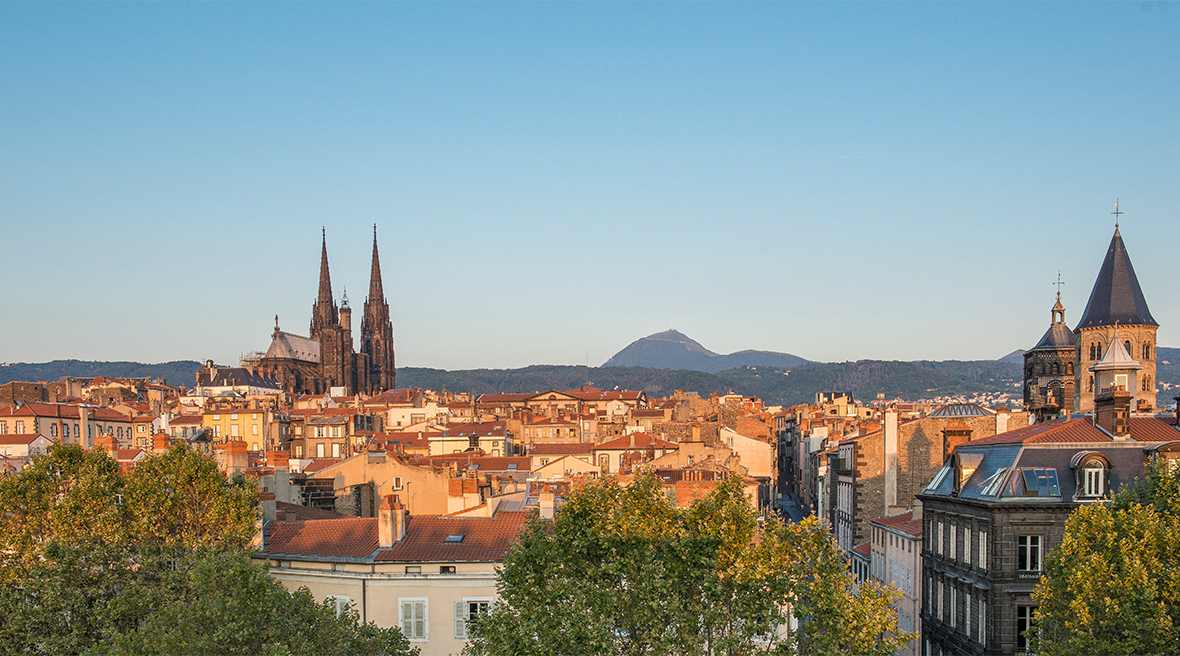
Clermont-Ferrand’s skyline is dominated by its volcanic stone cathedral
A city built on volcanic rock
Clermont-Ferrand is the historical capital of Auvergne, a university town with an identity and climate that draw much from the south. The nearby volcanoes of the Chaîne-des-Puys also lend some meteorological mite, creating a barrier to the bad weather which comes in from the west.
So, sit back and imagine a Burgundian landscape, vines everywhere you look, blanketing the surrounding hills in green corduroy pleats. Got it? Well, that’s not the Auvergne of today. Sure, that’s how the area looked before Phylloxera wiped out all of France’s vineyards in the late 1800s but these days its greenery comes from fertile volcanic soil creating abundant woods and prairie lands.
The city was built on a volcanic mound and many of its historical buildings are made from lava stone – a dark grey that zings with the bright blue sky above. My favourite was the Maison Chazerat, a neo-classical, city-centre manor house built around an oval courtyard.
There are two main ones: the 12th century romanesque Notre Dame de Port built in creamy sandstone with colourful Islamic influences; and the grey cathedral built in the northern gothic and almost as good as new today, thanks to the resilience of volcanic stone.
I loved the Aventure Michelin, a museum devoted to the world-famous-but-local tyre company. Michelin played a huge role in how Clermont-Ferrand developed from 1889 to the modern day: from inventing the first removable bicycle tyres and trying them out in a very public way by entering the Paris-Brest cycle race in 1891 to the launch of Michelin maps and guidebooks, the company has always been as cute with marketing as it is with innovation.
Volcanoes in France
You may not have heard of France’s volcanic area but don’t worry, you’re not alone. The Massif Central’s rich volcanic heritage is something of a secret to the masses outside France - even the volcanoes themselves are covered in dense beech woods as if hiding from the world’s gaze – but to global experts, the Chaîne-des-Puys is an open book to understanding volcanoes, and it’s a wonderful place to visit.
What makes it so special is that, in a small area, you’ll find every volcano type – crater, dome or maar (crater lake) – and you can see clearly how the Limagne fault line fractured 35 million years ago, allowing magma to rise to the surface to form the 80 volcanoes that lie in the 40km-long chain.
It’s the mix of the fault, the number of volcanoes and their youth that made the area special enough to be added to UNESCO’s world heritage list in 2018.
Here are my seismic hotspots:
Puy de Dome. At 1,465m, it’s the biggest volcano in the region and a juvenile 11,000 years old. Check out Eurotunnel’s detailed look at Puy de Dome here.
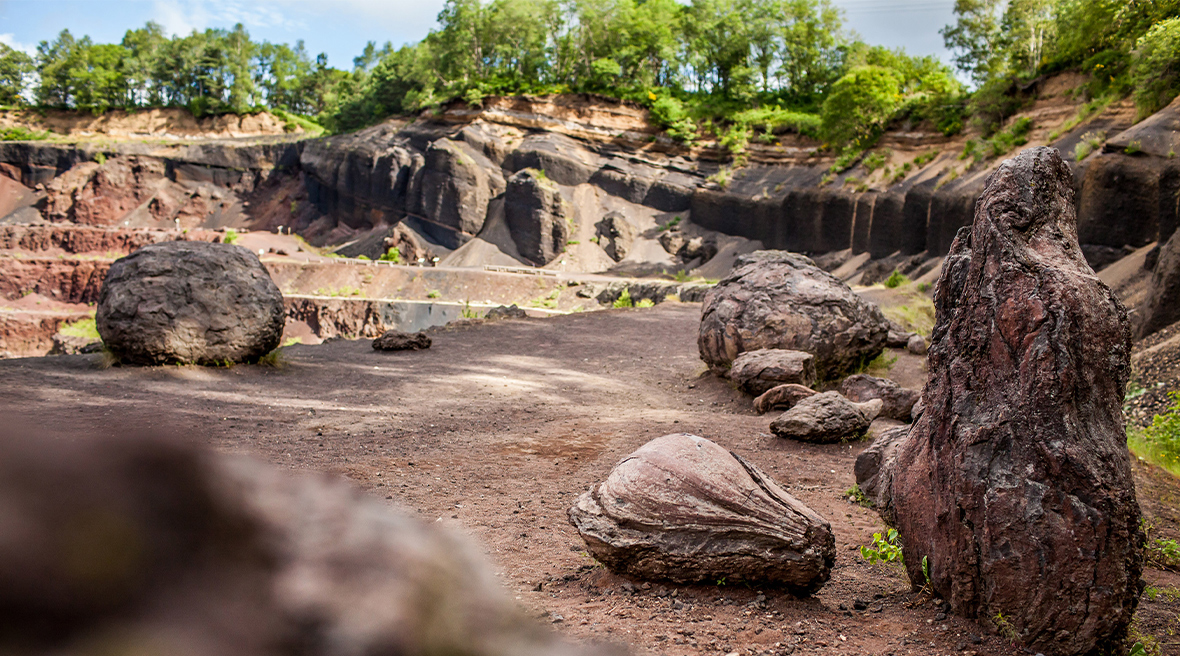
The 30,000 year old Lemptegy volcano has been open to the public for over 30 years.
Puy de Lemptegy. This is the most beautiful ugly thing I’ve ever seen; the colours change as the sun ducks behind rain clouds and, if you’re really lucky, you might see a chamois skitter along its vertical walls.
At first glance, Lemptegy looks like a disused quarry but in fact, it’s a russian doll of volcanoes that exploded one after the other. You can visit it on foot, with a guide or on a ‘petit train’ (with commentary in English), marvel at ‘bombs’ of volcanic rock that were tossed up in the sky and landed back down in the crater and gawp at the different coloured layers of the volcano walls.
Puy de Gouttes. If you want a close-up view of the volcanic chain, take a hike, with a guide, to the top of Gouttes. It’s a 6.7KM round trip which takes a couple of idyllic hours, via prairie, woods and the peak itself, leaving plenty of time to learn about the nature and wildlife, the fragility of these young volcanoes and how experts are rushing to find ways for sport, tourism and volcanoes to live harmoniously.
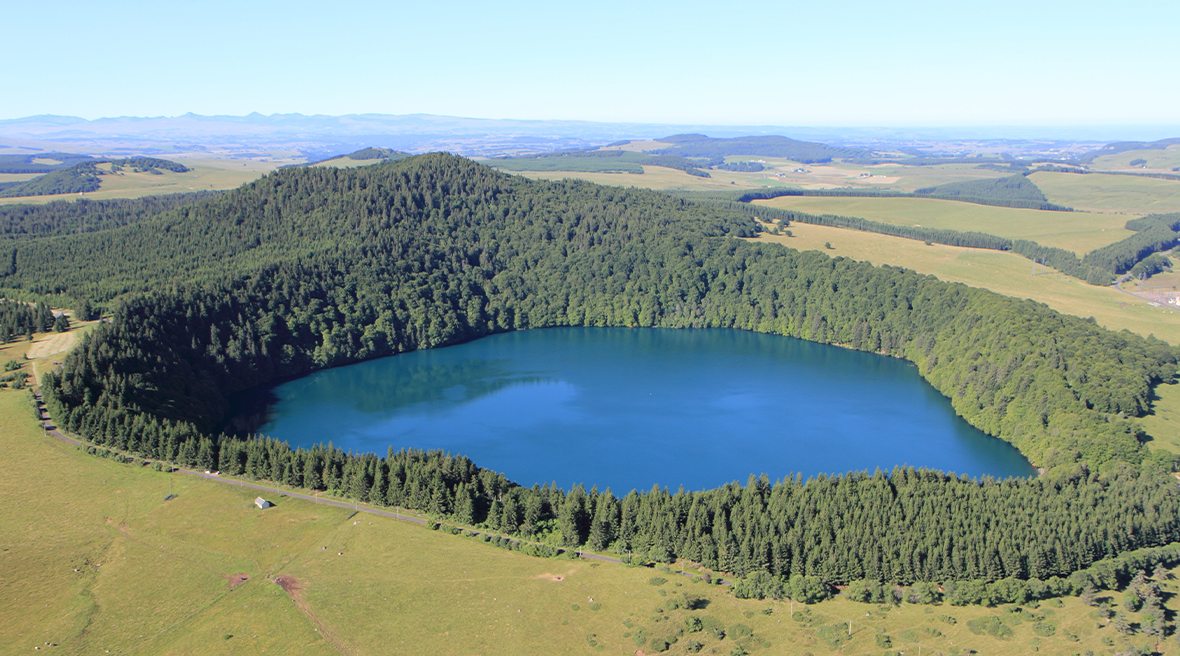
The waters of Lac Pavin change colour depending on weather and season
Lac Pavin. This volcano is a fantastic example of a maar. It’s the youngest volcano in the ‘chaine’ and the most dangerous because gas could still move and escape, in which case it would destroy the oxygen in the nearby atmosphere. There is a 5KM walking loop or you can climb to neighbouring Montchal to get a good view back down on the turquoise water.
Besse in the Massif du Sancy
Imagine, as a UK visitor to France, being told by a B&B owner that you are the eighth English-speaking visitor they have had staying with them; this should tell you all need to know about the medieval town of Besse. For those of you who, like me, hate treading the tourist trail, and scour restaurants guessing how many diners are locals, this lovely little place should be top of your list.
Besse is built on a lava flow and the stone here is lighter grey with shades of orange and violet which, when alongside the blood red paint on the window frames and doors, is very attractive. There are ramparts, gardens that remain from the Middle Ages, a town square and a 12th century church, and it’s a popular stopover for hikers.
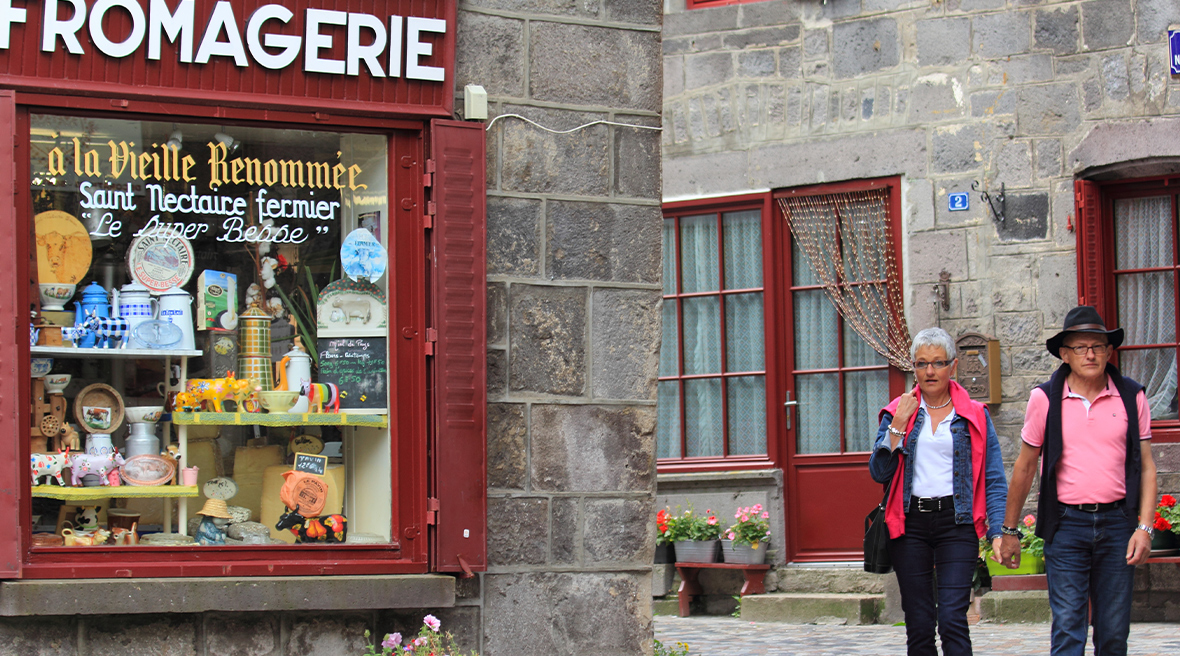
The combination of volcanic stone and blood red paint give Besse a unique aesthetic
St Nectaire cheese
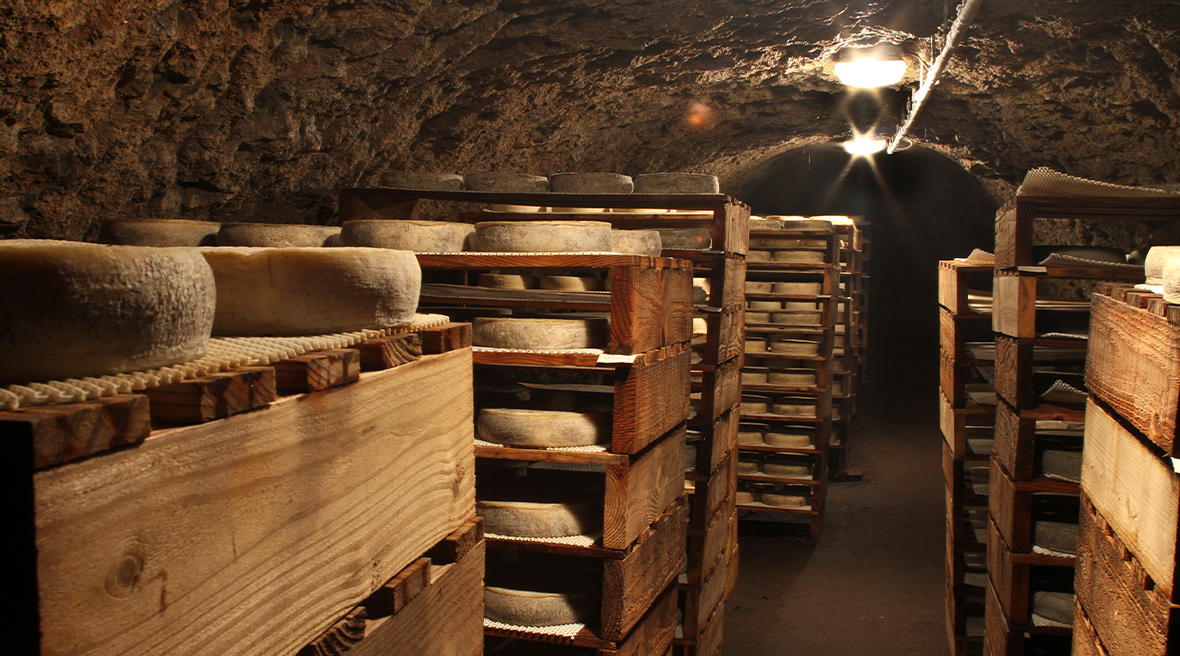
Sample St Nectaire, one of only 46 AOP cheeses in France
A spa town which is home to the feted fromage, a semi-soft cheese made from the rich milk of Salers cows that feed on the volcanic pastures. The AOP label given to St Nectaire is more to do with where the cows were born and the grass they eat than the farmers and their cheese-making methods.
I also ducked my head into a one-off art museum and workshop in the lower part of town. The Papon family have been creating artworks there for seven generations, using the calcium carbonate enriched water in the volcanic fountains to create petrified ‘objets’. It all started in the 19th century when ancestors came up with the idea of petrifying their favourite (stuffed) animals but you’ll be pleased to hear that these days the works of art are made using rubber moulds.
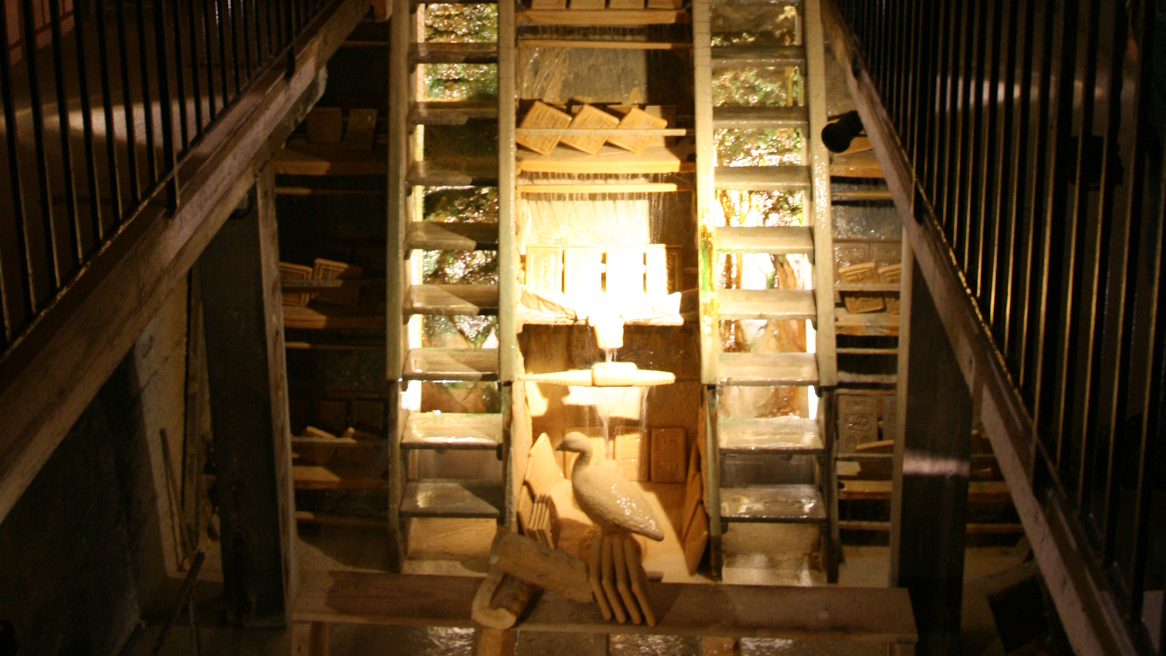
This unique way of creating art is worth seeing for yourself
Where to eat and drink in the Chaîne-des-Puys
La Gourmandise – Clermont Ferrand
Try the Truffade, a local dish made from potatoes and Cantal cheese and fried on the hob.
Restaurant de Commerce – Volvic
High-quality food for a very reasonable price in a deserted town square. Only in France!
Manoir du Tilleul - Chanat-la-Mouteyre
A wonderful set lunch menu for 14E. I ate tarte normande, lentils and duck thigh and a panna cotta.
En Attendant Louise – Ménétrol
Delicious local food and the hub of this village community.
Mildiss – Besse
A new hotel and restaurant set up by an ex Clermont-Ferrand rugby player. I had tuna tartare, then a big pork chop and a melon froth to finish.
Tourna Bouta Quo – Besse
It doesn’t get more authentic than this – but with a twist. The menu may be scrawled on an old-school exercise book, ragged at the corners, but the food is modern and surprising. I had slices of rare beef in a ginger, sesame and lemongrass.
Where to stay in Auvergne
Hotel Vialatte La Litteraire – Clermont Ferrand
A nice city-centre hotel with roof-top breakfast bar
Organic Eco Resort – Volvic
A small collection of wood-built lodges in walking distance from the town and the Grotte de La Pierre de Volvic. Mod-cons with a conscience.
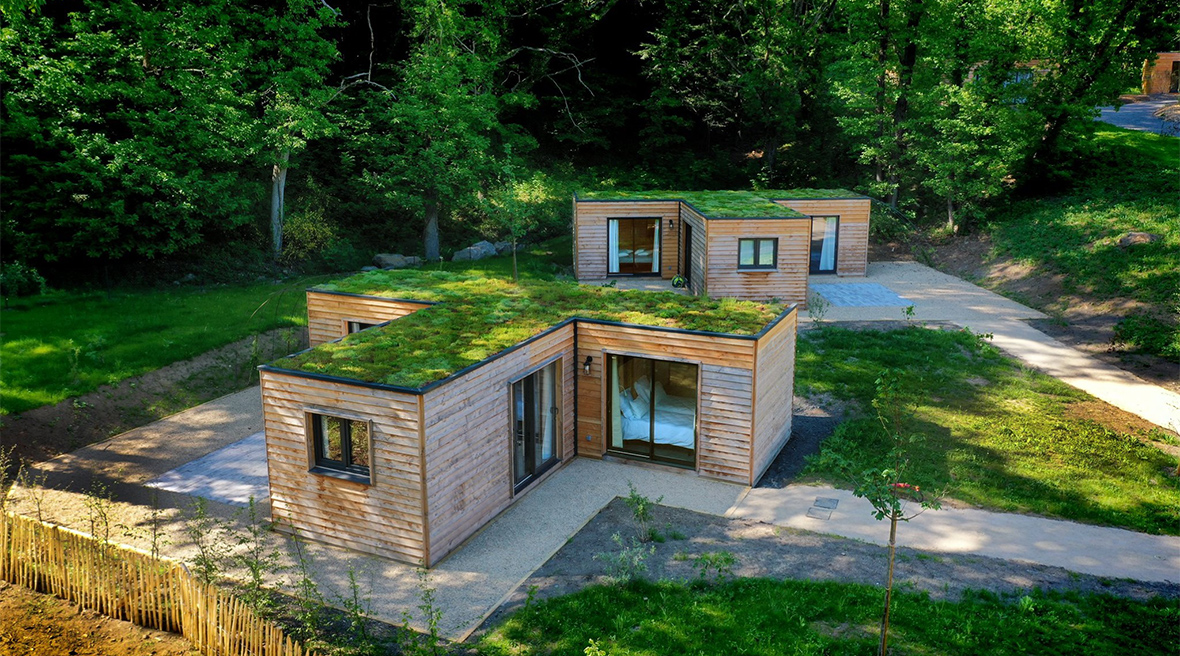
Discover the Volvic eco lodges
Aaisa– Besse
A gorgeous chambre d’hote in the old town, run by a charming French couple who, after holidaying in this very B&B for years, snapped it up when it came on the market and escaped the rat run in Paris.
Travel to Clermont-Ferrand with Eurotunnel
Eurotunnel is the perfect way to start your road trip. The journey from Calais to Clermont Ferrand takes about seven hours in the car and the fastest route goes via Paris and Orléans for well-timed stopovers.